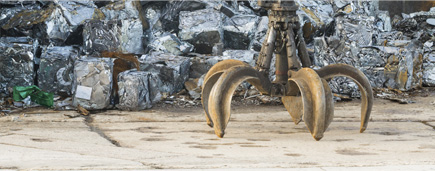Ferrous and Non-Ferrous Metals

What’s the Difference between Ferrous and Non-Ferrous Metals?
If you are selling scrap metal, the recycling yard will most likely ask if what you have is ferrous or non-ferrous metal. It is also highly likely you will come up blank if your background is not in engineering. What is the difference, and why is there a difference in prices?
Basic difference
The simple answer is that ferrous metals contain iron while non-ferrous metals do not. The most common ferrous metal is steel. Common non-ferrous metals include copper, zinc, aluminum, and lead.
How to tell
The best identifying indicator is rust. Oxygen reacts with the iron element to make iron oxide which is the reddish brown substance known as rust. However, stainless steel does not rust easily as it has high content of chromium, making it resistant to oxidation.
Another characteristic of ferrous metals is high tensile strength. That’s why mild steel is mostly used in building bridges and skyscrapers. Steel is the commonly used metal in large scale projects needing a lot of metal for example railways, industrial containers and automobile making. It is also found in many home utensils and power tools. Another common test for ferrous metals is their magnetism. They will attract a magnet.
Non-ferrous are used where contact with water or moisture is likely. This includes gutters, drainages, roofing, piping etc. this is because they do not rust and corrode, which could weaken them. They are also malleable making them useful in applications like electric cabling and dentistry. Gold for example, is highly malleable such that it can be beaten to a sheet so thin it passes light. They are also non-magnetic making them ideal for electronic circuits.
Pricing differences in scrap
Steel is the most recycled materials in the world. Yearly estimates of 1.3 billion tons of steel production out of which 500 million tons are from recycled material. Non-ferrous metal ores are getting scarcer and most of the production of these metals comes from recycled material. Aluminum is especially in high demand and is the third most recycled metal. The high volumes of steel and iron being recycled means that prices do not vary by big differences.
The law of demand and supply determines scrap metal pricing where non-ferrous metals particularly precious metals like silver and gold, command high prices due to scarcity and high demand. Extracting these metals is also expensive. Recycled precious metals will command nearly the same prices as extracted metals due to high demand. Aluminum is an exception due to the high recycled volumes which make the prices nearly constant.

